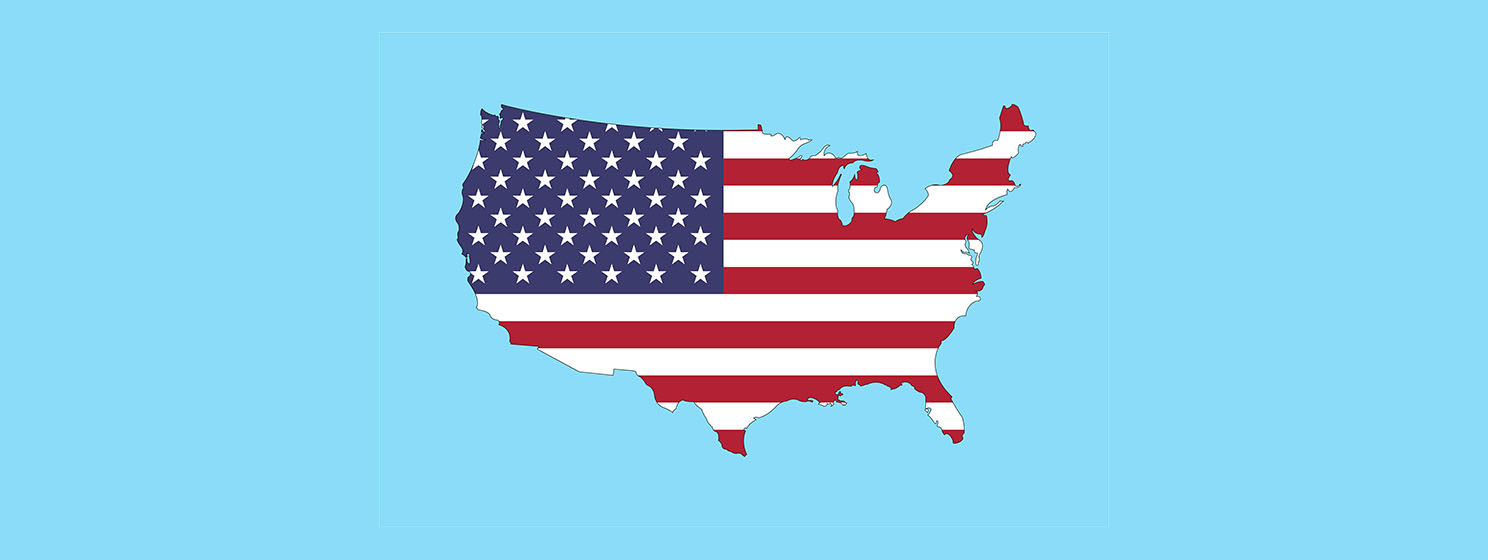|
Getting your Trinity Audio player ready...
|
U.S. politicians claim they plan to get digital asset legislation onto the desk of President Donald Trump, whose crypto ventures seem to have found a new gear for growth.
- Legislative timeline update
- Trump queried re his crypto ventures posing obstacle to legislation
- WLFI to be tradable, UAE fund becomes biggest buyer
- USD1 passes USDC in trading volume
- USD1 puts its reserve to the (at)test(ation)
- Trump mining/treasury firm raises $220 million
As Congress focuses intently on Trump’s ‘big, beautiful’ (and highly controversial) spending bill, the strategy for passing stablecoin and market structure legislation is growing clearer. That said, the timelines might not match Trump’s demands for accelerated action.
On June 26, Senators Tim Scott (R-SC) and Cynthia Lummis (R-WY) held a ‘fireside chat’ with Bo Hines, the White House-appointed executive director of the Presidential Council of Advisers for Digital Assets. Among the chat topics were the dueling strategies of the Senate and House of Representatives on how best to proceed to get mutually acceptable crypto legislation onto Trump’s desk for signing.
The Senate has approved their stablecoin bill (GENIUS), while the House has yet to hold a floor vote on theirs (STABLE). Meanwhile, the House has successfully steered its market structure bill (CLARITY) through two committees while the Senate has so far released only ‘principles’ of its own market structure plan.
The day before this chat, Lummis alarmed some observers at the Bitcoin Policy Summit in Washington by declaring that she hoped both crypto policy bills would pass “I think before the end of this calendar year.” That’s a far slower timetable than the more optimistic (and unrealistic) plans from this spring, which envisioned Trump signing bills into law by July 4.
During Thursday’s chat, Lummis said the Senate hopes to release a market structure draft bill “before the August recess, then mark it up in September.” Scott concurred, saying he wants to ensure “there is a timeline for market structure to be completed by September 30.” Following the chat, Hines tweeted that “we are committed to getting market structure done by the end of September. Period.”
House leaders previously suggested that their preferred strategy is bundling stablecoin and market structure legislation into a single bill, but that plan isn’t sitting well with their Senate counterparts. Scott, who chairs the Senate Banking Committee, said last week that he and his House GOP colleagues were “one team,” but that “does not mean that we see everything exactly the same.”
On June 27, Bloomberg reported that the House strategy had shifted to advancing GENIUS alongside CLARITY separately in a single procedural vote, then holding separate votes on each measure. The idea is to get GENIUS onto Trump’s desk as soon as next week, but this plan is subject to change, and House leaders such as Rep. French Hill (R-AR) haven’t publicly confirmed that they’re onboard.
Whether the House is willing to abandon its own stable legislation to pass GENIUS as is remains to be seen. Just last week, some House Republicans were quoted saying, “We like our House version [of stablecoin legislation] a great deal,” and there are some notable differences between the two bills.
While the GOP’s majority in the House is razor-thin, there are sufficient crypto supporters among Democrats to likely ensure passage of both measures without too much arm-twisting. And any GOP holdouts need only contemplate the haste with which Trump recently dispatched a senator who displeased him to understand the perils of defying the president’s wishes.
Trump dodges query on crypto venture controversy
Democrats in Congress have repeatedly tried to attach amendments to GOP-sponsored legislation that would limit Trump’s ability to profit off his family’s numerous crypto ventures. However, these efforts have been blocked at every turn by the majority party.
On Monday, Sen. Jeff Merkley (D-OR) gave it another shot, attempting to attach an anti-corruption amendment to Trump’s ‘big, beautiful’ bill. Like his previous efforts, this latest amendment was shot down in a party-line 47-53 vote.
On June 27, Trump gave a press conference where he was asked whether his family’s crypto ventures could doom Democratic support for the bills he wants to see on his desk ASAP. Trump was also asked whether he’d consider ‘pulling away’ from these ventures to ensure legislative progress.
Trump didn’t actually answer the question, instead delivering a typically meandering commentary about the pivotal role he played in building up the crypto sector, how China would be dominating crypto if he hadn’t done everything he’s done to boost U.S. operators, and how “people are saying” that Bitcoin is taking “a lot of pressure off the dollar and it’s a great thing for our country.”
Trump eventually said, “I don’t care about investing. You know, I have kids and they invest in different things. They do believe in it. But I’m President and what I did do there is build an industry that’s very important.”
Trump emphasized that “we’ve created a very powerful industry and that’s much more important than anything that we invest in.” Translation: no, the Trump family isn’t going to abandon its highly lucrative crypto ventures anytime soon, if ever.
WLFI finds a new sugar daddy
While the Trump family has been quietly reducing its stake in their decentralized finance (DeFi) project World Liberty Financial (WLF), his DT Marks DEFI LLC still controls “approximately 40%” of WLF. And that smaller slice may soon be coming from a much larger pie.
For starters, WLF co-founder Zak Folkman stated last week at the Permissionless conference in New York that WLF plans to release a mobile app. Folkman described the app as “a Web2-style fintech application that allows a non-native crypto user to be able to very easily deposit [and] get the benefit of earning through DeFi applications and … send and receive crypto between friends and family very easily.”
WLF launched its WLFI ‘governance token’ last October, but the token’s use has so far been limited to a couple of votes on projects WLF might consider launching. WLFI holders currently have no ability to transfer, trade, or sell their tokens, but a major shakeup appears in the works.On June 25, WLF tweeted that it was “working behind the scenes to make [transferrable WLFI] happen.” Details weren’t offered, only a tease of “[b]ig news coming soon.” In response, the president’s son Eric tweeted two fire emojis and a bald eagle.
Others have been less enthusiastic, suggesting that, in addition to reducing their ownership in WLF’s holdco, the family may also be looking to dump their cache of WLFI tokens on retail customers. At present, only ‘accredited’ investors have been approved to purchase WLFI (unlike the president’s $TRUMP memecoin, which was a hit with rank-and-file Trump fans out of the box).
And institutional investors continue to step up to the plate. WLF announced last week that it had sold $100 million worth of WLFI to the Aqua1 Foundation, a ‘Web3-native fund’ based in the United Arab Emirates. Aqua1 says it “focuses on both primary market investments and secondary asset management in the Web3 sector.”
The stated goal of this nine-figure outlay is to “help accelerate the creation of a blockchain-powered financial ecosystem centered on blockchain development, Real World Asset (RWA) tokenization, and stablecoin integration.” The latter is a reference to USD1, the stablecoin WLF launched this spring.
Aqua1’s buy would make it the largest known WLFI holder, surpassing the $75 million worth of WLFI purchased by Justin Sun, founder of the TRON blockchain. After opening his wallet, Sun was named a WLF advisor, so who knows what WLF honors await Aqua1 founding partner Dave Lee.
WLF has been accused of engaging in ‘reciprocal’ token buys with companies that buy large chunks of WLFI, with WLF charging the other company a 10% fee. WLF has denied these allegations, but the company said it “plans to support the launch of Aqua 1’s Aqua Fund—a UAE-domiciled investment fund developed in partnership with leading regional stakeholders.”
Oddly, the WLF tweet on June 27 announcing the Aqua1 deal had retweeted the @Aqua1Fund account, which now appears to have been suspended. (Has the ongoing feud between Trump and X owner Elon Musk gotten that ugly?)
USD1 sets trading volume milestone
Back to USD1, on June 27, Bloomberg reported that WLF had partnered with Re7 Labs, an offshoot of U.K.-based DeFi hedge fund Re7 Capital. The deal will see WLF launch a USD1 stablecoin ‘vault’ on the Euler and Lista lending/staking platforms, part of WLF’s plan to expand USD1’s use on the Binance-run BNB Chain, aka Binance Smart Chain. (Binance is an investor in Lista, back when it was known as Helio).
The news was confirmed the following day by Re7 Labs. Re7 Capital founder Evgeny Gokhberg said the parties were “advancing a model for stablecoin adoption that meets the expectations of both crypto-native and institutional users.”
USD1 previously received a major shot in the arm from Abu Dhabi’s state-run MGX investment fund, which purchased $2 billion worth of the tokens in April. That pushed USD1’s market cap to $2.1 billion, but USD1’s cap has so far failed to venture much further than the $2.2 billion mark.
Despite this modest cap, WLF issued a celebratory tweet on Monday noting that USD1’s 24-hour trading volume had hit $3.37 billion, outpacing the $3 billion volume of USDC, the second-highest stablecoin by market cap issued by Circle (NASDAQ: CRCL).
The fact that USD1’s volume is 50% greater than its total market cap makes it a significant outlier among stablecoins. There is $61.5 billion worth of USDC circulating in the wild, making its volume less than 5% of its market cap. Market leader USDT (issued by Tether) showed volume of $36 billion, roughly 23% of its $157.7 billion cap.
USD1’s reserves in the spotlight
Some might smell a rat in USD1’s suspiciously high volume, but WLF hopes you’ll focus instead on USD1’s first-ever third-party report on the fiat reserves backing that $2.2 billion in issued tokens. Folkman promised last week that a USD1 audit was on the way, and WLF issued the first of what it promises will be monthly reports on Monday.
The report, prepared by accounting firm Crowe LLP, only covers a weeklong span between April 22-30, concluding just after that $2 billion MGX infusion. Moreover, Crowe’s role here is simply to examine an ‘assertion’ of WLF’s custodian BitGo Technologies.
Regardless, Crowe says it obtained sufficient “evidence about [BitGo’s] assertion” that it believes is “sufficient and appropriate to provide a reasonable basis for our opinion” that the assertion is “fairly stated, in all material respects.”
As of April 30, BitGo held the entire $2,127,970,380 backing USD1 in government money market funds (there was $270 in cash on April 22, but presumably, some pizzas were ordered at some point the following week). Interestingly, less than $15 million of that $2.1 billion in USD1 was issued on the Ethereum network, with the remainder all on BNB.
American Bitcoin Corp raises $220 million
Think we’re done recapping all the Trump-related crypto news? Think again!
Monday brought word of a major fundraising effort by American Bitcoin Corp (ABTC), the block reward mining and crypto ‘treasury’ outfit formed this spring via a partnership with Eric Trump, Donald Trump Jr., and miner Hut 8 (NASDAQ: HUT). Hut 8 holds a majority (80%) stake in ABTC.
While ABTC has kept mum about how its mining operations are performing, Hut 8’s latest filing with the U.S. Securities and Exchange Commission (SEC) reveals that ABTC struck a deal for a private placement of up to $200 million of ABTC’s Class A common stock. (ABTC has yet to go public but plans to do so in Q3 via a merger with Nasdaq-listed Gryphon Digital Mining.)
The first closing of ABTC’s private placement on June 27 resulted in just over $220 million raised, of which $10 million was paid in BTC (at a value of $104,000 per token) rather than cash.
ABTC plans to use the net proceeds to “fund its strategic and Bitcoin accumulation goals, which may include, but are not limited to, the purchase of Bitcoin and/or [mining rigs].” On May 31, ABTC revealed that it had acquired 215 BTC as the foundation of its new treasury.
Believe it or not, that’s still not all the Trump crypto news that fits to print. We’ll close by noting that Trump Media & Technology Group (TMTG) has applied for its second crypto-focused exchange traded fund (ETF). Unlike the first ETF that focused solely on BTC, this one is a Frankenstein hybrid of both BTC (75%) and Ethereum’s native ETH token (25%) that will require the SEC to approve a rule change for ETF listings.
And the president is now promoting new ‘Trump Fragrances’ for both men and women. These have nothing to do with crypto, but “they’re all about Winning, Strength, and Success,” and Donald’s crypto ventures seem to be doing all that in spades.
Watch: Bitcoin L1 vs L2 Debate With Paul Sztorc

 01-05-2026
01-05-2026 




